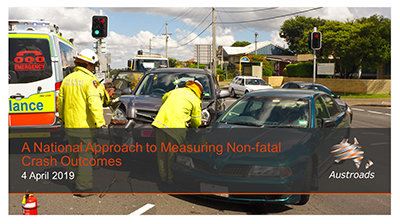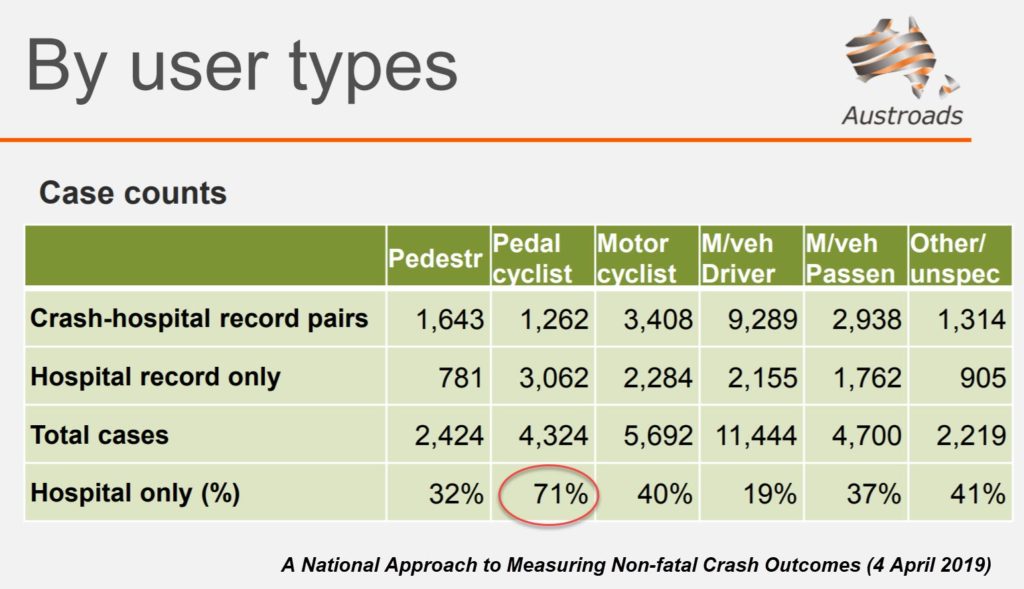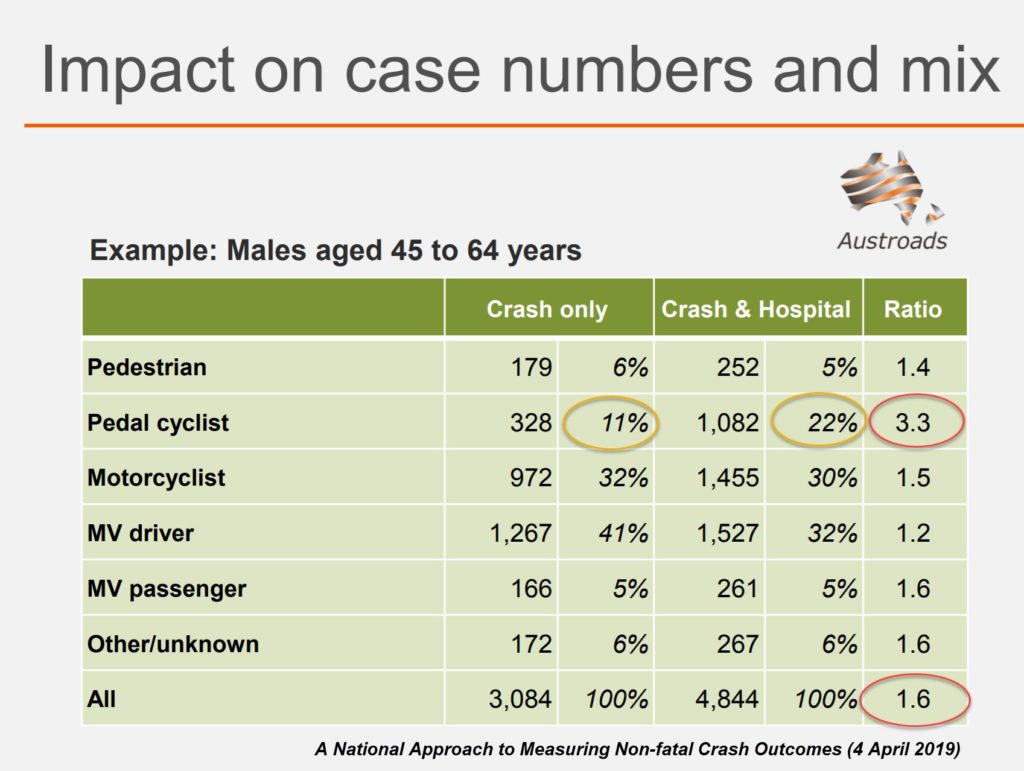Austroads recently released a report around a pilot project to improve the measurement and reporting of serious injury crashes by matching crash and hospital data.
It is known that neither crash data nor hospital data alone is adequate for reporting progress against the National Road Safety Strategy’s target of reducing serious injuries by 30 per cent.
The aim was to provide a proof of concept (feasibility study) for a national approach.
To assist this report, Austroads ran a webinar to explain the results. This webinar is available on their website.
Interesting points
Two points that stood out were:
1 – When looking at the data by “user types”, hospital records made up 71% of pedal cyclists’ total cases (3062 out of 4324), a dramatic difference compared to the other user types where the hospital records made up between 19-40% of total cases.
2 – When looking at Males aged 45-64 years, adding hospital records could increase the ratio of data available by 3.3 times. This was dramatically more than the general average of 1.6 times. (Other gender/age demographics were not provided in the webinar).
These findings suggest that hospital data is helpful for gauging road safety issues for pedal cyclists, as there may be limited reporting from crash records.
They mentioned that most pedal cyclist crashes do not involve a motor vehicle and are therefore not recorded as a crash by police.
Interesting question
There was a question asked about whether the data distinguished between on and off road use. There weren’t specific data points, but when an “unusual vehicle” was involved (eg. golf buggy), off road use could be inferred. Also, there is a data point for “type of place” of the event, and “street or highway” was often used as a reference to on road incidents.
Next steps
Now that this study has successfully validated the feasibility of this data collection, the next stages include:
- Organising data to cover the national population coverage (from 85% to 100%)
- Collecting 10 year data (as opposed to 1 year) which will enable analysis such as trends over time
To find out more, read the full Austroads report.



